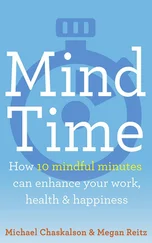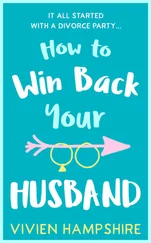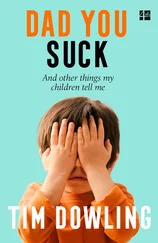And anyway, neither model quite dispenses with the notion of compatibility: an attraction strong enough to allow you to think about the daunting prospect of marriage in the first place; an affinity that makes your relationship a better bet than some others; an irrational emotional response that makes you break up with your girlfriend of four years a week after meeting an English girl in a red duffel coat. Could there actually be something deeper at work, something chemical? Something genetic, even?
In his book The Compatibility Gene , Daniel M. Davis reported on a curious study – the so-called ‘smelly T-shirt experiment’. First performed by the Swiss zoologist Claus Wedekind in 1994, the experiment involved a group of students, forty-four males and forty-nine females. Wedekind first analysed the students’ DNA, in particular their Major Histocompatibility Genes (MHCs). The group was then divided along gender lines. The men were told to wear plain cotton T-shirts for a certain period while abstaining from anything – soap, sex, alcohol – that might alter their natural scent. After two days the shirts were placed in unmarked cardboard boxes with holes in them, and the forty-nine women were asked to rank the boxes by smell using three criteria: intensity, pleasantness and sexiness.
Wedekind’s initial results showed that the women preferred the T-shirts worn by men whose compatibility genes were most different from their own. Your MHCs contain the code to make your immune system, and the range you inherit – one set, or haplotype, from each parent – is, in a sense, your genetic identity. It’s the ‘self’ that your immune system checks against when distinguishing between your own cells and something ‘non-self’ like a virus.
Although the results were controversial, the smelly T-shirt experiment seemed to indicate that women unconsciously select mates whose MHCs would diversify the immune systems of any potential offspring, thereby increasing their chance of survival against disease.
No one quite understands the mechanism by which we might sniff out the individual genes of someone we meet at a party (especially through a fog of perfume, soap and alcohol), but this hasn’t stopped dating agencies from employing MHC typing as a matchmaking tool. One lab offering such testing to online dating services claims that ‘with genetically compatible people we feel that rare sensation of perfect chemistry’.
I’m not sure there’s a geneticist on the planet who would stand by that statement, but the advent of DNA testing for genetic compatibility raises the intriguing possibility that one might, for the sake of argument, find out if two people who had already been married for twenty years were actually meant for each other at the molecular level. Just because you can do it, doesn’t mean you should do it. But I did do it. It’s OK – I’m a journalist. I did it for money.
To test your marital compatibility after two decades together seems, to say the least, a bit reckless. While I might well think that the length of the marriage itself constitutes proof of compatibility that no DNA sample can contradict, I am also worried about my wife reading the test results and saying, ‘Well that certainly explains a lot.’
My wife’s only fear has nothing to do with our possible incompatibility; she just doesn’t want any needles stuck in her. Fortunately, to test your DNA all you have to do is put a little bit of your spit in the post.
‘If I have to watch you do that,’ says my wife, ‘I’m going to be sick.’ I turn my back and continue drooling into the test tube. An attached lid flips over the funnelled top, piercing a membrane and releasing a measured amount of blue preservative. After shaking up the samples and labelling them according to the instructions, I seal them in a pre-addressed envelope while quietly admiring how idiot-proof the whole process has been made. I’m halfway to the post box before I realize I’ve left out the signed consent forms.
It takes two weeks for the samples to be processed by a method I cannot begin to explain, during which time I worry ceaselessly. Without ever quite admitting it to myself, I have long suspected that romantic love – or at least the first flush of it – is some kind of biologically triggered delusion, one you might sum up with words as empty and meaningless as ‘that rare sensation of perfect chemistry’.
As the date for the test results approaches I am seized by an irrational fear that the natural smell of my genes is actually quite off-putting, and that twenty years ago my wife fell in love with the brand of deodorant I used to use. Do they even still make it?
On further investigation I learn that the hormones in the contraceptive pill can interfere with a woman’s response to olfactory signals. In the smelly T-shirt experiment, women who were on the pill actually preferred the smell of men with compatibility genes similar to their own – they were getting it exactly wrong. I go in search of my wife, whom I find sitting in the kitchen.
‘Were you on the pill when you met me?’ I say. She looks up from the newspaper she’s reading and stares at me.
‘It’s a bit late to ask me that now,’ she says. ‘But yes.’
Oh my God, I think: are the people at the lab going to tell her that she picked the wrong husband? While I don’t actually believe you can find the perfect partner by sending your spit to a company in Switzerland – or that body odour is the start and finish of attraction – I do not underestimate the psychological force of being told there are rather better genetic matches out there for you than the git you married. Such news might not be easy to dismiss. Who knows? I’m finding it hard enough to imagine my reaction, much less my wife’s. What have I done?
At the end of the fortnight we are both summoned to the Anthony Nolan Lab in Hampstead to receive our results from Professor Steve Marsh. They don’t analyse DNA for dating agencies at Anthony Nolan, but they use the same sort of testing to match tissue types for bone marrow transplantation. As we sit down in a conference room with Professor Marsh, I steel myself to receive bad news I won’t understand.
Marsh explains a bit about the specific genes the testing looks for – genes which contain instructions to make proteins called human leukocyte antigens (HLAs). HLA proteins don’t exist to facilitate online matchmaking; nor are they there to make bone marrow transplantation a pain in the arse. Their job is to fight infection.
‘If you have a virus,’ says Marsh, ‘these are the molecules that are taking little bits of the virus and showing it to other cells and saying, “Is this me? Or is it foreign?” If it’s foreign, the cell is killed.’
Some HLA molecules are better at snatching up certain protein fragments than others; people with a particular HLA type have increased resistance to the HIV virus. Some HLA genes, however, make you more susceptible to certain disorders. None of this sounds terribly sexy, but it makes sense that a decent spread of HLA types would be of benefit, and that a member of the opposite sex who’s got some HLAs you don’t have would make a good partner, and therefore might possibly smell more attractive to you.
Marsh has good news. My wife and I share just one HLA type (an allele, as it is called): HLA-A*32:01:01. The rest are different, a level of diversity which makes us a good genetic match, and allegedly highly desirable to one another. ‘If the whole sniffing-your-mate-out thing is to be believed,’ says Marsh, ‘then you’ve managed to sniff out a good mate.’ It’s not clear which one of us he is talking to.
My overall HLA makeup turns out to be fairly common, which means, I suppose, that a broad range of women of European Caucasian extraction would, upon meeting me, find me inexplicably unattractive (a lifetime of anecdotal evidence does, to some extent, support this theory). Conversely, it also means there are two perfect tissue matches for me on the bone marrow donor register in the UK, and five more in the US. Being common has its advantages.
Читать дальше












